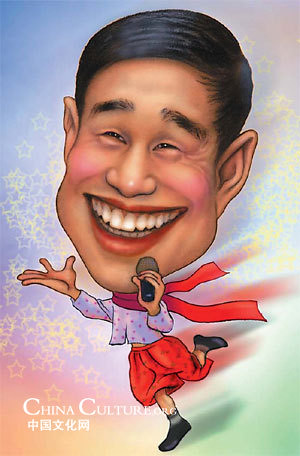| Home > China Feature |
Artistic Aspects
There can be little doubt, after examining first hand the structure of kung fu, that mastery of it is indeed mastery of a fine art form. It requires a tremendous amount of background, information and disciplines, which would shame our liberal-arts students. The priests of old were adept in all of the following: medicine, music, art, weapons-making, religions, animal husbandry, cartography, languages, history, and of course, kung fu. The artist had to be more than a fighting machine, he had to know how, where and why to enter a fight, and even of greater importance, how to avoid conflict. Only with "unbeatable" ability of the priest was he secure enough not to need to fight.
There was a ranking system of sorts used, beginner, disciple, and master. The beginner (novice or student level), was the menial servant. Only very crude rudiments of kung fu were in his domain. Disciples were in effect almost priests, still having to master themselves, but of the right mettle to carry the traditions and secrets of the Shaolin. The pinnacle of master was reached by very few; it was truly the achievement of a lifetime.
The primary obstacle that a disciple had to pass to attain the priesthood was the test for master rank. Actually a series of oral and practical exams, they culminated in the test of the tunnel. The candidate was lead to a corridor linked with the outside world. In the corridor were booby-traps, all lethal, all unpredictable. The disciple had to pass all of these, for there was no going back, no way out but to succeed. Most never even began the journey; few finished it. The adept who passed the traps faced one last obstacle; a several hundred pound urn filled with burning iron filings. On each side of the urn was an emblem, different for each temple, usually of a dragon and a tiger. The urn had to be moved with the bare forearms to unblock the exit. In so doing, the now priest was forever branded as a Sil Lum monk.
Many priests just out of the temple would wander about the country acting as doctors, roving law givers, and guardians of the poor. Some would return to the temple then it was their job to prepare the next generation of priests. Entry was between ages five and seven. Graduation was at the age of at least twenty-two. And every bit was part of a long, hard life.
The stylistic variations within the Chinese martial arts are due to various factors. First, some priests were not content with one "truth", and engineered improvements or variations on the old standards. Some arts had their origin from Indian exercises, while others were influenced by Greek wrestling, and equally unexpected pursuits.
Secondly, the priests were not all content as priests. Some went civilian and taught parts of the temple boxing, mixed with moves of their own. A man who preferred the use of one style of attack, i.e. claws, would build a whole discipline around gouging, claw-like attacks (Eagle Claw system).
Thirdly, the civilians taught by priests would adapt what they needed in their real lives. For this reason, Southern Chinese preferred hand techniques with stable stances, adaptable to boats, while the Northern Chinese adapted almost bizarre foot techniques, flying kicks and wild sweeps.
Art
 more
moreChinese Traditional Art---- Paper...
Papercuts refer to handicrafts made by cuttingpaperwith sci...
Funny...ha-ha or peculiar?
Every culture has its own sense of humor. That's why Jim...

Let your fingers do
In Peking Opera, finger movements express different emotion...

Custom
 more
more



 print
print  email
email  Favorite
Favorite  Transtlate
Transtlate 
